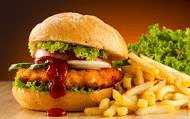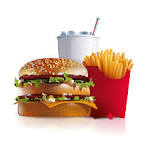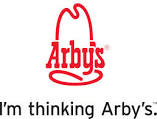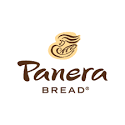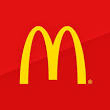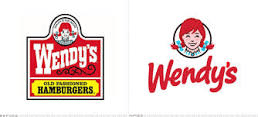Ilana Katz MS, RD, CSSD
Most clients arrive with conditions. The one I find the most obvious and demanding is that we are all busy. Whether it is running around for business meetings, carpooling for kids, errands, errands and more errands, it seems like living out the car tends to prioritize cooking in the kitchen.
Statistically it is reported that at least 25% of all Americans eat fast food every day and there are more than 300 000 fast food restaurants to choose from country wide.
Sadly, eating on the run is a reality of modern day life! I thus write this article with the intention to assist minimizing the calorie and fat traps of this on the go lifestyle with a need for quick and convenient above all else.
Avoid the Drive Thru Doom
Drive thru’s and fast food chains generate visions of scarcity of greens, fruit and other vegetables, as well as out of control serving sizes. Actually, it is not that difficult to avoid the drive-thru doom. You can still eat conveniently, on the run – or pick up nutrition as I like to call it, without allowing the drive thru to derail you. This is so, simply because these days, nearly every fast food chain offers a healthier selection on their menu. You yourself can avoid larger than life portions by either sharing with a friend/co-worker, or bringing half the food back home or to the office, or simply just throwing some away.
Familiarizing oneself and knowing what to look for can help avoid derailment and diet failures.
Whether its fast food or not so fast food these simple guidelines can save a lot of calories, fat and heartache (both literatively and figuratively):
- Avoid special sauces, including condiments and dressings
- Junior size over super size
- No, you do not want fries with that.
- Order from the earth eg. Most fast food joints offer a some sort of salad eg McDonalds fruit and walnut salad, Wendy’s Ceasar, or Grilled chicken salad.
- Preplan, pre-commit and prevail rather than derail. Be light years ahead with your willpower. In other words, pre-commit to the good options before you are yapping at the loud speaker.
- Even small amounts of nutritious, earthy fruits and vegetables can add to good nutrition over the course of the day, so make sure the slice of tomato and lettuce is included on a sandwich and substitute the fries and chips for sides of fruit and salad options.
And now for some more specific selections!
CHICKEN
– White meat (particularly breast meat) has less fat and calories than dark meat.
– Choose reparation methods of baking, broiling, grilling and even blackened instead of fried or fried with a breaded batter.
– Skinless over skin. Skin holds the most saturated fat which clogs arteries.
Eg. A skinless breast runs at approximately 320 calories with 7 grams of fat, while with the skin on and same preparation method , same serving is 510 calories and a whopping 27 grams of fat.
Chik-Fil-A
Chargrilled chicken sandwich (270 calories, 3.5 grams of fat). Even better, without the bun: eating just the chicken is 170 calories and less than 3 g of fat.
Spicy Chicken Wrap – 380 calories, 6 g of fat
Southwest chargrilled salad – 240 calories, 8 g of fat without the dressing.
Light dressing options: low fat raspberry vinaigrette dressing, whole serving of which is 80 calories, 2g of fat, light Italian (15 calories, 0.5 g of fat) or a fat free honey mustard (60 calories, 0 g of fat)
Choose a sinless side of fruit (50 calories, 0 g of fat). Next best bet is carrot and raisin salad (170 calories, 6 g of fat) or small Hearty Breast of Chicken soup (140 calories, 3.5 g of fat) over small fries which is a whopping 287 calories and 13 g of fat.
Boston Market
Quarter rotisserie skinless, white meat chicken is 320 calories, 7 grams of fat with a sinless side of steamed vegetables (50 calories, 2 g fat).
Fruit salad (60 calories, 0 g fat), garlic dill potatoes (140 calories, 3 g fat) OR chicken noodle soup (180 calories, 7 g fat) are healthier and lower calorie sides.
CHINESE
There is a preconceived idea of simple rice and vegetables being healthy however most of the popular Chinese dishes are loaded with fat and sodium in their sauces. The best tips for making it less calorie dense and healthier is to get the sauces on the side, choose brown rice instead of white, and avoid anything battered and/or fried.
Chinese take out servings are typically double the size of what a recommended portion should be, so you are better off splitting it with a friend, or serving it over more than one sitting. Brown rice will typically make you feel fuller based on its fibrous content, and furthermore is less calories and fat than white rice. Asking for steamed vegetables and sauce on the side can also save on hidden calories and fat grams.
Some menu examples:
Panda Express:
Half a serving of Chicken and mushrooms (which is the appropriate portion) is 130 calories, 6 g of fat. Beef and broccoli (150 calories, 7 g of fat). Shrimp and pineapple (150 calories, 5 g fat). These are all good selections with a nutritious covering of protein and earthy carbohydrates.
Manchu Wok:
Oriental grilled chicken (255 calories, 9 g fat), pineapple chicken (253 calories, 17g fat), black mushroom tofu (159 calories, 10 g fat) or simple and healthiest is mixed vegetables (130 calories, 9 g fat).
Did you know that General Tso’s Chicken is the highest calorie dish on most Chinese restaurant menus. Egg rolls is not a far off second.
MEXICAN
Most of the unexpected, hidden calories in Mexican cuisine is typically in refried beans. Even though one may question that based on the fact that they are merely beans, they are packed with lard. This means the burritos that one thinks are healthy and not so calorie dense, are mistaken. Choosing taco’s over burritos allows the option of avoiding refried beans… Simply ask for black beans instead. Always choose soft shell to avoid the deep fried demon, and skip the fat loaded sour creams and cheese dips. Red sauce over cheesy sauces may be somewhat saltier, but are closer to fat free and lower in calories.
It is also possible to say no to the chips and salsa laid out as a free appetizer. They are obviously hard to resist when sitting right in front of you but not opting them in the first place helps avoid that fat trap.
Fresco style means meal preparation with fresh salsa, onions and cilantro versus the original cheese sauces of queso style. When going Fresco, the saving in calories is significant. Not all menus list fresco versus original however you will be surprised how many know exactly what you want if you simply ask. Spice it up with traditional red sauce, which is only 10 calories per serving and no extra fat.
Remember a serving of sour cream in any Mexican setting adds at least 60 calories and 5 g of fat while guacamole, the healthier choice, is 48 calories and 4 g of GOOD fat.
Taco Bell:
Original Chicken Ranchero taco has 270 cals, 14 g of fat but in fresco style it is only 170 calories and only 4 g fat.
Fresco Gordita Bja Chicken (230 calories, 6 g of fat), Fresco grilled steak soft taco (170 calories, 5 g fat)
Sides worth opting for are fresco style Mexican rice (150 calories, 4 g fat) or fresco nachos (200 calories, 11 g fat) and fresco pinto and cheese (130 calories, 3 g fat).
Taco Cabana:
White chicken fajitas are ones best bet with only 190 calories and 6g fat. Beef taco without the sauce (148 calories, 7g fat) – then get sauce on the side and dip lightly.
Black bean taco (216 calories, 5 g fat).
Sides worth opting for are black beans (110 calories, 1 g fat) Spanish rice (180 calories, 5 g fat ) or calabacita (squash) which is only 80 calories and 5g fat.
SANDWICHES
Bread itself can be a trap especially when baked specifically for a bread joint. Fancy bread has loaded sugar and butter. For example in a Panera ciabatta sandwich the bread alone has more than 500 calories and 12 g of fat before a topping is even considered.
French baguette sandwiches may save the day but is still 150 calories and 1g fat for the bread itself. Even the lower carb Italian herb bread has 160 calories and 2 g fat before any toppings are added.
Most of the time, half a sandwich with a side of fruit will satisfy a lunchtime appetite, especially the size sandwiches served at fast food places and restaurants. It also gives one the opportunity to load up on vegetables with all the lettuce, tomato and cucumbers you can eat.
The trick to ordering healthier, lower calorie sandwiches is to avoid dressings and condiments and control the portions of the fillings. Substitute mayo for a slice of avocado or even some plain Greek yogurt if available.
Don’t be fooled into thinking wraps or salads are less calories than a sandwich. Sometimes they are, but it all depends on what the ingredients are. The perfect illustration of this is comparing an Arby’s beef and cheddar sandwich of 440 calories, 21 g fat to Arby’s southwest chicken wrap of 550 calories and 29 g fat. Not that I recommend a beef and cheddar sandwich as a healthy lunch option, but who would have thought southwest chicken was not one.
Sandwich places do typically offer good salad options too, but again be aware of the demons lurking in dressings, condiments, and some of the rather caloric dense ingredients in those fancy salads. Best to choose greens with tomato, cucumbers, fresh peppers and other lean fibrous vegetables with a grilled source of protein (salmon, chicken) on top, keeping dressings on the side and very lightly dipped.
Comparing some other sandwich selections:
Arby’s:
Hot ham and swiss (280 calories, 6g fat), regular roast beef (320 calories, 14g fat), Arby’s melt (300 calories, 12g fat).
Some calorie saving tips is to skip the Arby’sides. For example Jalapeno bites (310 calories, 21g fat) . Even the small curly fries is calorie and fat loaded (340 calories, 20 g fat). Notice how just the sides are almost double the calories of the sandwich itself.
Panera Bread:
Best sandwich options at Panera are turkey breast on sourdough (430 calories, 14 g fat) or smokehouse turkey Panini (680 calories, 23g fat). If these are the best, makes you wonder why we think sandwich places seem lighter in calories and fat grams… just is not so!!
Interestingly enough their plain French onion soup is only 80 calories and 3 g fat. If the cheese and croutons are included its now 200 calories and 10g fat, not too bad compared to the fancy sandwiches though. There is also always a fruit cup as a side option which is fat free and only 70 calories.
Subway:
Subway is one of the healthier sandwich options. There are various sandwiches that are 6 g or less of fat. There are also lean, low fat cuts of turkey (and other deli meats) as sandwich options, without any fancy toppings other than vegetables, therefore keeping the calories reasonable too. Light mayonnaise instead of full fat mayo is available as an option.
Baked chips, vegetable soup (90 cals, 4 g fat), Spanish style chicken with rice soup (90 cals, 2 g fat) or chicken noodle soup (60 cals, 1.5g of fat) are also available as sides or as main dishes.
BURGER JOINTS
An occasional (versus frequent) plain burger can offer an appropriate fast food option versus all the secret sauces and cheesy ones. Adding the extra patties, cheese, Mayo, and/or bacon is what causes extreme calories and fat grams for one quick meal.
Example: A Burger King whopper junior has 370 calories and 21 grams of fat, and even though this is not great, compared to a double whopper it looks mild (double whopper: 997 calories, 64 g of fat).
At burger places, keep it on the healthier side by skipping the fries – even a small fries – at minimum, adds an extra 300 calories, and 15g fat.
McDonalds:
Caesar salad (with 1 Tbsp Newman’s Caesar dressing) is 280 calorie and 22g fat. A lot less without the dressing of course, but that’s not too bad for a dressed salad.
Grilled chicken Asian salad (290 calories, 10g fat) and adding the dressing that comes on the side adds 90 calories, 2.5 g of fat. Using a little of the dressing can thus make a reasonable meal.
Original burger (260 calories, 9 g fat) or premium grilled chicken sandwich (420 calories, 9g fat) – quite surprising that a chicken sandwich is more loaded in calories and fat than the burger itself.
Burger King:
As noted above, it is preferable to stay away from whopper with cheese (760 calories, 47g of fat). Instead the regular burger is 290 calories, 12g of fat.
Most burger King sandwiches come with Mayo, so if you want to cut the fat, you can always ask to hold that.
Burger king also offer low calorie salads. By adding croutons (15 calories and 2g fat) or border ranch dressing (110 calories, 8 g of fat) is where the choices can be controlled. They also offer a Mott’s strawberry applesauce in packets for an alternative dressing/condiment.
Wendy’s:
The ultimate chicken grill (370 calories, 8g fat) and Jr. Hamburger (280 calories, 9g fat) are most reasonable sandwich options.
There are also salad options, but not all of them are healthy or lower in calories than a sandwich. Wendy’s Southwest taco salad has tortilla chips and Ancho Chipotle ranch dressing and even with reduced fat sour cream, the calories add up to 700, and 41 g of fat. Of course with a salad, ingredients and dressings can be controlled!
Wendy’s also offer a healthy menu that includes yogurt and granola (250 calories, 6g fat), sour cream and chives potato (320 calories, 4 g fat) or small chilli (220 calories, 6 g fat)
IN SUMMARY
The negatives of fast food revolve around portion sizes and a scarcity of greens, vegetables and fruit. With our new health revolution and increased awareness even the fast food joints are grasping the concept, and are slowly but surely introducing these healthier options on their menus.
The choice and control on the calories and fat grams is all controllable by the consumer, you!! So staying top of your chosen healthier lifestyle is attainable even if fast food lands up being the only choice you think you have.
